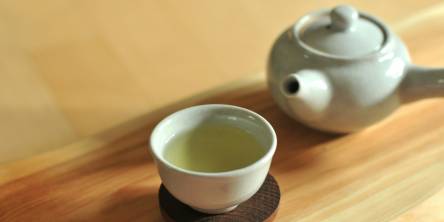Pharmaceutical Equipment: The Intersection of Science and Manufacturing

The industry of making drugs and medication is a very technical one that requires a lot of accuracy, speed and compliance to very many standard measures. Pharmaceutical equipment, in other words, remains an indispensable link between the scientific experiment and the mass-produced medication. This article focuses on pharmaceutical equipment with its emphasis on the role it has to play when it comes to converting value propositions into workable products by businesses, and the areas that the latter should focus on when seeking the services of equipment vendors.
The Role of Equipment in Drug Development
Pharmaceutical equipment plays a major role in the drug development process and it is used in the various phases including R and D and production. In the R & D stage, the researchers use different apparatus to perform the experiments, compound synthesis, and drug formulation. This equipment must be of high measures and suit small fortunes of material in service.
Read more: 9 Reasons Why Public Relations is Crucial for Pharma Industry
During this move from the laboratory to the production floor, the equipment jobs changed as drugs progressed. Here the emphasis is put on the generalisability, on the speed and the procedural uniformity. Manufacturers of the equipment needed in production of pharmaceuticals come up with machines that can emulate the environment in the laboratory in the sense that they are able to produce large quantities of the drug without having to reduce the quality of the drug. For instance, a pill machine maker has to be confident that the equipment being manufactured would enable creating pills to the standard and packaging in a specific way, shape, size, etc as may be required in dosage.
In other words, pharmaceutical equipment is congruent with scientific realities and locus of turning ideas into marketable commodities. The generic requirements of safety, efficacy, and quality demanded within the sphere of the pharmaceuticals’ industry are barely conceivable without proper tools and equipment.
Precision and Quality Control
The best feature of this industry is quality control, and this is where precision equipment is so essential. Pharmaceuticals are highly regulated products, to this effect, every aspect of the manufacturing line has to have stringent controls in place.
Pharmaceutical equipment manufacturers have responsibility to bear in mind that their production line machines need to deliver the degree of precision necessary to make quality control possible. This ranges from satisfying itself that pill presses are manufactured tablets of equal weight and content to satisfying itself that equipment to fill and seal blister packs is well designed.
Modern technologies for pharmaceutical production are also incorporated with the sensor, automation system and real-time control capacity so as to identify the productivity parameters which are off from the distinct process standards. It is at this level that utmost precision is required particularly when the batches that one is preparing are to correspond to the specified level of quality.
Customization for Specific Needs
Each pharmaceutical product is particular, so are the processes followed to manufacture those products. This is why there is compelling ground to adopt customization as one of the most important considerations in the process of choosing pharmaceutical equipment. Equipment should be capable of meeting the peculiarities of the particular drug being manufactured, with regard to API variety, dosage forms, and compatibility with other systems.
Drug types, for instance, may necessitate a change in the size, shape, or coating of the pills that a pill machine maker has to make in order to meet new demands. Likewise, goods utilized in the making of sterile injectables must be designed to function in clean shells while having characteristics that prevent contamination.
Those manufacturers of pharmaceutical equipment that allow their equipment to be adapted to suit the needs of the product being made can enhance the manufacturing process of its end-user by providing it with equipment that is most suitable for the product it is manufacturing. It also increases productivity while at the same time improving potential compliance to set legal or regulatory requirements.
Pharmaceutical translation services further support this process by ensuring that technical documentation, regulatory filings, and product labels are accurately translated to meet the linguistic and compliance standards of target markets
Integration of Science and Engineering
It allows the unity of pharmaceutical science and engineering in such a manner that is not seen in any other industry. On one extreme, new drugs are established from the result of research and analysis in the field of medicine. On the other hand, the synthesization of these drugs requires knowledge of engineering to clearly define how best they can be synthesized to produce the necessary volume of the drug.
Pharmaceutical equipment is perhaps the best example of where these two disciplines are most blended. Original equipment manufacturers needed to have a strong background in sciences that deal with the formulation of drugs while at the same time understand the engineering aspect of scaling up a process. It also allows them to create machines that are able to mimic the conditions brought about in a laboratory but at a much larger scale.
For instance, a maker of pill machines used to make pills with the drug formulation held inside will have to look at the physicochemical properties of the said formulation, the release profile of the pills as well as the manufacturing environment as part of the considerations for designing the equipment. This can only be achieved where engineers and scientists liaise so as to ensure that the equipment has met all the specifications.
Future Trends in Pharmaceutical Equipment
As in many industries, the equipment being used in the manufacture of drugs is also changing with evolving conditions in the pharmaceutical industry. Automated manufacturing and usage of big data analysis are some of the most emerging trends witnessed in the manufacture of pharmaceutics. Manufactured tools do not only increase productivity, but at the same time make the process more accurate, cutting out any potential for human error.
There are also the trends of automated and digitally integrated facilities, innovative materials, and technologies which include 3D printing, continuous manufacturing, and many others to diversify the production processes of the equipment manufacturers in the pharmaceutical industry. These innovations have the prospect to change dramatically the way of drug production, both concerning time and cost and in concern of individuality of the product.
Also, advanced technology has been called for, given that sustainability has become a core area of focus in product design and, by extension, equipment design. These trends are likely to progress over time and as the regulatory standards become more stringent players in the equipment manufacturing sector will have to design equipment that equips the pharmaceutical industry for meeting newer regulatory demands.
Pharmaceutical equipment is thus the missing link between research and development on one side, and pharma production in a commercial capacity on the other. This is the equipment through which all the intricate flow of the drug production and development processes is made visible and achievable so that products get manufactured and distributed effectively, securely and in legal compliance.
There are certain requisites which could be important while selecting a manufacturer for pharmaceutical equipment – precision, customization and applicability of scientific principles and engineering knowledge. Hiring a reliable manufacturer of pills producing machines and other equipment, the firm can guarantee itself the necessary tool for functioning in this highly competitive and constantly evolving market.
Similar Articles
Halitosis, sometimes known as foul breath, affects millions of individuals worldwide and can cause humiliation, influencing everyday interactions and confidence.
In the modern world, maintaining good health often feels like a constant challenge. Between busy lifestyles, sedentary habits, and lack of motivation, many people find it difficult to stay consistent with exercise, diet, or wellness practices.
Learn how UV toothbrush sanitizers use UV-C light to kill 99.9% of bacteria, viruses, and fungi—backed by science for better oral health.
In the past, the experience of soaking in a hot tub or relaxing in a sauna was something reserved for spas, health clubs, or luxury retreats
Learn practical strategies for nurses to advance careers while maintaining patient care, managing time, and supporting well-being in today’s fast-paced healthcare.
Learn 6 key benefits of a juice cleanse, from boosting energy and hydration to clearer skin, easier digestion, and healthier eating habits.
Discover 5 simple ways to enjoy green tea daily for better taste, more nutrients, and lasting wellness benefits for your body and mind.
Discover how house slippers support foot health indoors—combining warmth, protection, and support—with insights from podiatrists and real‑world studies.
How whole-body donation creates a lasting impact, advancing medical education, research, and future healthcare breakthroughs.









